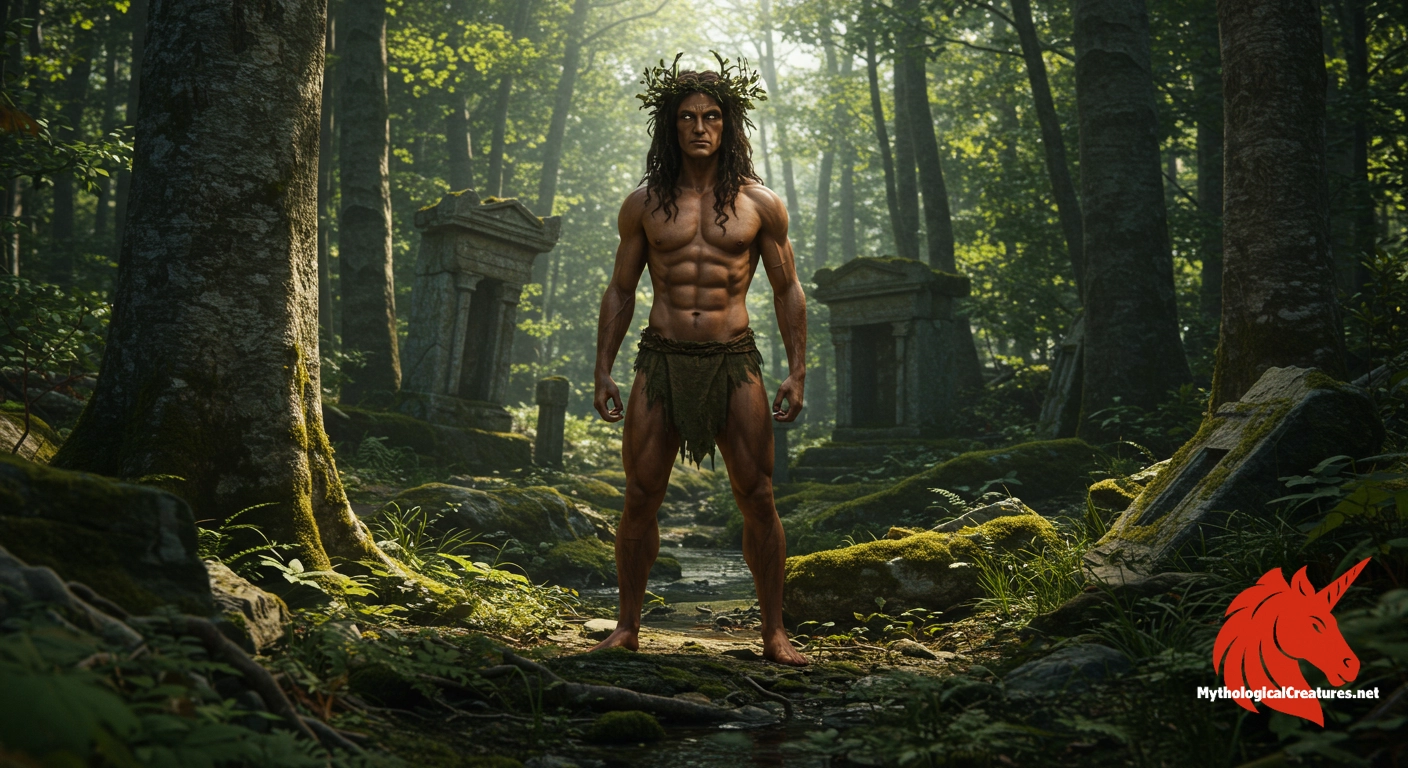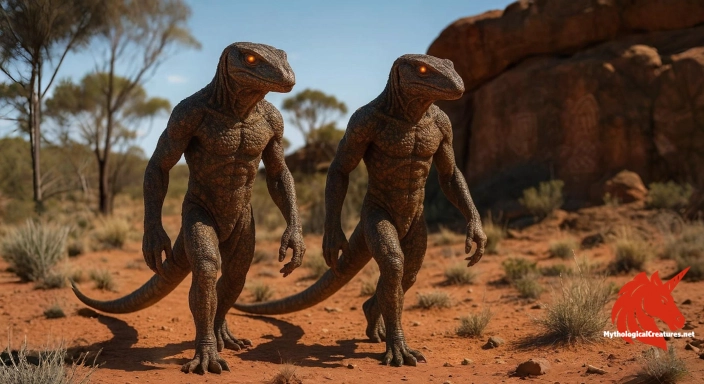Oxylus: Oxylus is a multifaceted figure in Greek mythology, portrayed variously as a nature daimon, a demigod son of Ares, and a king of Elis.

Oxylus
Oxylus - Oxylus embodies the melding of divine, natural, and mortal realms, reflecting the complex and overlapping genealogies of Greek myth.
Origins & First Encounters
Oxylus emerges as a multifaceted figure in Greek mythology, whose narrative spans the realms of nature, warfare, and monarchy. His mythic presence first appears in traditions that celebrate the wild majesty of mountain beech forests, where he is revered as a daimon with close connections to the natural world. Born of divine lineages, his origins are intricately linked to the revered mountain gods such as Orius, creating an aura of ancient, untouched power. In one telling, he is celebrated as the progenitor of hamadryads through an intimate union with his own kin, establishing his role as a guardian of the forest. Another variant of his myth links him directly to the martial energy of Ares, reflecting the turbulent passions of the ancient Greek pantheon. His portrayal as a king of Elis further underlines a transformative shift from the wild to the regal, drawing together themes of nature, war, and leadership. The early attestations of his myth have been woven into local lore and later literary works, revealing a character that adapts based on the cultural and geographical needs of its audience. His enduring legacy is a testament to the complex interplay of divine ancestry and human governance, marking him as a figure whose story resonates with both the beauty of the natural world and the gravitas of heroic tradition.
Source Texts & Tale Variants
The narrative of Oxylus is preserved in a number of ancient texts that capture the diversity of his mythic roles. One notable source is the eclectic text of the Deipnosophistae, which recounts his legacy as a daimon of the mountain beech forests. Various fragments of myth and local genealogies also mention his role as the son of Ares and Protogeneia, infusing his story with a martial fervour that differs from his woodland origins. Other sources, though fewer in number, lauded him as the illustrious king of Elis, thereby establishing his royal dimension. Multiple storytelling traditions have reworked his tale to suit different local customs, blending the supernatural with elements of heroic ancestry. Oral traditions and regional cults contributed to a spectrum of versions, where details of his parentage and achievements shifted over generations. These variants, handed down through both poetic and narrative forms, illustrate the fluid boundaries of myth-making in ancient Greece. Collectively, the surviving records, though fragmentary in parts, underscore the thematic richness and variability that characterize Oxylus’ enduring myth.
Form & Powers
In artistic depictions, Oxylus is portrayed with an enigmatic blend of natural and divine features that shift with his narrative context. When envisioned as the daimon of the beech forests, his form is often ethereal, with eyes that seem to shimmer like dew on leaves and a subtle integration of vegetal motifs suggested by hints of bark and foliage in his hair. In the variant as the son of Ares, his physique acquires a robust quality and a muscular contour reminiscent of a warrior forged in battle, embodying the ferocity of conflict. As the king of Elis, his appearance is rendered with an air of regality, evidenced by a noble bearing, a strong jawline, and dignified composure that commands respect. His visage, whether wild or royal, often carries symbols of his dual allegiances—a connection to both the natural world and human civilisation. Classical artists sometimes imbued his costume with elements reflective of ancient Greek heraldry, merging attributes of nature with the regalia of leadership. In certain representations, the interplay of light and shadow across his features suggests both the mysterious allure of the wilderness and the stern discipline of a battle-hardened hero. Overall, his physical portrayal serves as a visual testament to the layered identities that define his myth, oscillating between the myths of untamed nature and the disciplined grandeur of ancient rulership.
Regional Faces
The myth of Oxylus exhibits significant regional diversity in its retellings across different parts of the Greek world. In the antecedent traditions of the mountainous regions of Othrys and the Pindus, he is celebrated primarily as a daimon with the power to influence the vitality of beech forests. Local cult practices in these highland areas emphasised his connection with hamadryads and the sacred groves, highlighting a spirituality that was deeply entwined with the rhythms of nature. In contrast, the version of Oxylus emerging from Aetolia and Elis embraces a more civilised aspect, portraying him as a ruler with a celebrated heroic past. This regional adaptation reflects the political and social values of communities where the consolidation of power and the affirmation of noble ancestry were of paramount importance. Variations in iconography are evident, too, with some areas favouring depictions that integrate vegetation and natural elements, while others illustrate him adorned in the symbols of royalty and martial prowess. The differing portrayals underscore the capacity of myth to be moulded by local environments and cultural priorities. Thus, Oxylus serves as a chameleon-like figure whose mythology adapts to both the sacred wildlands and the storied history of ancient Greek polities.
Cultural Parallels
When set in conversation with other mythic figures, Oxylus stands out for his ability to encapsulate multiple aspects of ancient divine narrative. His role as a guardian of woodland spirits finds a parallel in the natural deities of other cultures, such as the Roman Silvanus and the Celtic Green Man, both of whom also symbolise the interdependence between nature and divinity. The martial aspects of his myth draw comparisons with heroes and demigods who are borne of divine conflict, resonating with figures renowned for their strength and turbulent heritage. In his dual nature as both a forest daimon and a regal warrior, he mirrors other figures in Greek mythology who blur the lines between the wild and the cultivated, thereby harmonising the spiritual and the earthly. His multifaceted character is analogous to the complex portrayals found in the myths of Pan and Dionysus, where the interplay of ecstasy and order reflects broader societal themes. Additionally, the metamorphosis of his identity over time mirrors the evolution seen in many ancient myths, where local narratives amalgamate into hybrid archetypes. His ever-changing depiction has prompted comparisons with eponymous heroes across the Mediterranean, who similarly embody both the chaos of nature and the structure of civic life. Through these cultural parallels, Oxylus exemplifies the ancient tendency to construct composite deities who serve as nexus points between disparate realms of human experience and natural phenomena.
Legacy & Modern Evolution
The evolution of Oxylus’ myth reflects the dynamic interplay between tradition and reinterpretation over countless generations. In classical antiquity, his character bridged the digital divide between the divine and the earthly, clinging to morphed identities that ranged from spirit of the wilderness to a celebrated warrior king. As the ancient world transformed through Hellenistic and Roman influence, his myth was recontextualised to fit the evolving landscape of religious thought and societal structure. Later, during periods of cultural renaissance, his story was revisited with renewed artistic and literary vigour, merging ancient aesthetics with modern sensibilities. The enigmatic duality of his character has inspired contemporary writers and artists to explore themes of nature, power, and transformation in innovative contexts. Modern adaptations often reimagine him as a symbol of the unyielding bond between humanity and the natural environment, reflecting emerging ecological concerns alongside timeless myths of heroism. The layered legacy of Oxylus continues to prompt scholarly inquiry and inspires creative reinterpretations that celebrate the enduring power of myth. In every era, his multifarious identity serves as a vivid reminder of the timeless interplay between myth, nature, and the enduring human spirit.
Interesting Fact
The name Oxylus refers to several distinct figures in Greek mythology, demonstrating how ancient narratives could evolve to encompass a nature spirit, a divine warrior, and a mortal king under one legendary identity.
Quick Creature Info
Origin:
Associations:
Our Mythic Legendary Rating:

Also Sometimes Known As:
Habitat:
Supernatural Powers:
Physical Attributes:
Abilities:
Behavior:
Weaknesses:
Lore:
References
Discover Another Mythical Legend You May Not Have Heard Of?
Uncover the mysteries of ancient folklore and expand your knowledge of legendary beings from cultures around the world.
Dare to Meet the Wati-kutjara....
Mythical Disclaimer: The images and data on this site are derived from various historical and literary sources, but we have found that many myths often have multiple versions and interpretations across references, sometimes contradictory. As a result, these creature depictions are artistic interpretations—imaginative blends of folklore, legend, and a dash of AI guesswork. Because creature descriptions vary widely, our illustrations and accompanying information represent our best effort to honor mythology while bridging creative gaps. Enjoy these interpretations—just remember, we've done our best to respect the stories and validate available data, but in the realm of mythology, details often shift, imagination leads the way, and nothing is ever set in stone!
Curated by the Mythological Creatures Team (rev. May 2025)
